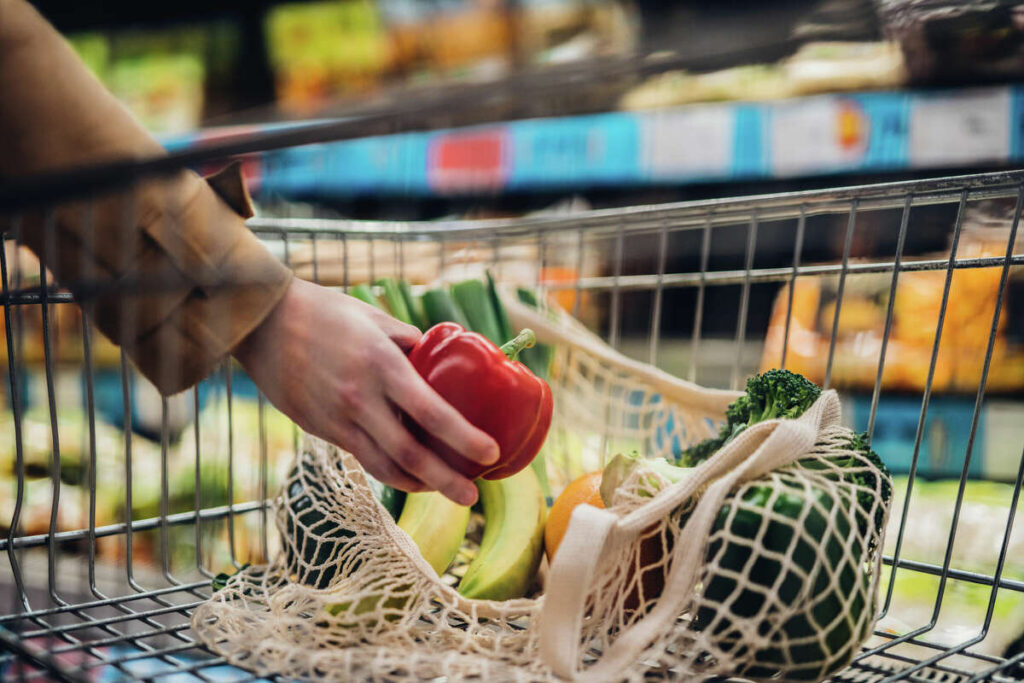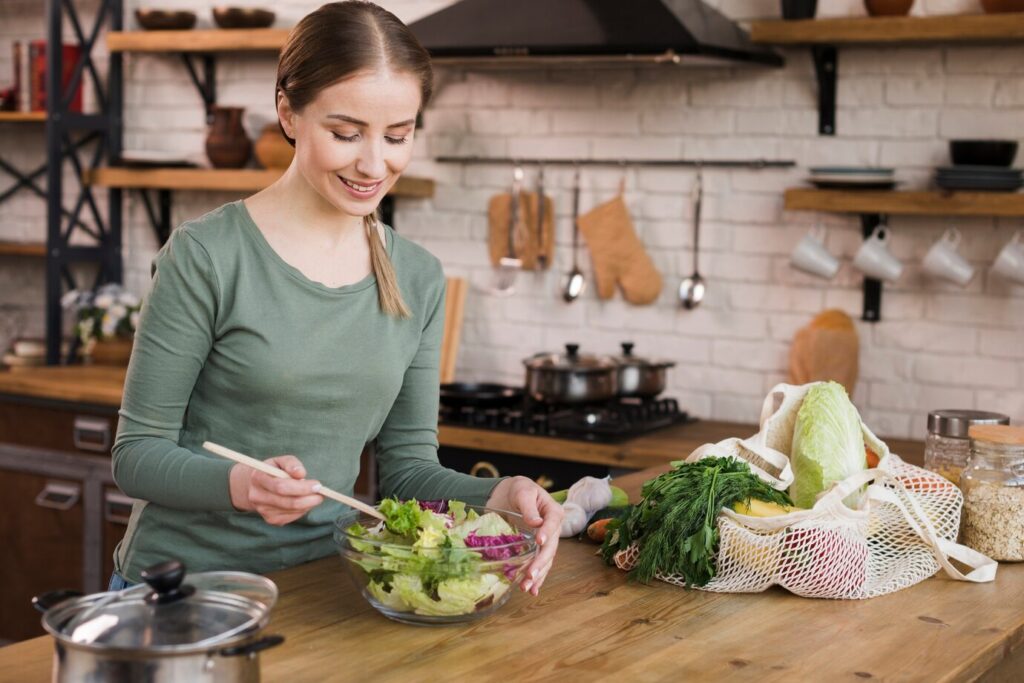In today’s fast-paced world, eating healthy can feel like a full-time job. Between work, errands, family, and other responsibilities, cooking balanced meals often ends up at the bottom of the to-do list. That’s where meal planning comes in—it’s not just a trend; it’s a life-saver for busy people who want to eat well without the stress.
The good news? You don’t have to spend hours in the kitchen or follow a strict diet. With a few smart strategies and easy recipes, you can plan your meals in a way that saves time, money, and mental energy—while still keeping your health on track.
Let’s break down some simple, realistic meal planning ideas that will help you stay nourished—even on your busiest days.
🍴 1. Plan Just 3 to 4 Core Meals a Week
You don’t need to plan every single meal. In fact, trying to cook something new seven nights a week is a recipe for burnout.
Instead, focus on planning 3 to 4 main meals that you can rotate, repurpose, or batch cook. For example:
- A one-pan chicken and veggie bake
- A hearty lentil soup
- A stir-fry with rice or noodles
- A big batch of chili or curry
Cook once, eat twice—or more. You can have leftovers for lunch or freeze extra portions for later.
🧠 2. Keep a List of “Go-To” Meals
When life gets hectic, decision fatigue can hit hard. That’s why it helps to create a personal list of easy, reliable meals you know how to make and actually enjoy.
Include meals that:
- Require minimal ingredients
- Can be made in 30 minutes or less
- Use pantry or freezer staples
Examples:
- Eggs + toast + avocado
- Tuna salad + whole grain wrap
- Pasta with veggies + pesto
- Sheet pan salmon + roasted potatoes
Having this list on your fridge or phone takes the guesswork out of busy evenings.
🛒 3. Create a Smart Grocery List (and Stick to It)

Once you’ve picked your meals for the week, make a grocery list based on those recipes. Divide it by category (produce, dairy, proteins, pantry, frozen) so shopping is quick and efficient.
Pro tips:
- Check your fridge/pantry before shopping to avoid duplicates
- Buy in bulk when possible (think grains, beans, frozen veggies)
- Choose versatile ingredients that work in multiple recipes
For example, a bag of spinach can be used in smoothies, salads, and scrambled eggs.
⏱️ 4. Use the “Prep Once, Eat All Week” Method
Batch prepping is a game changer for busy schedules. You don’t have to cook full meals—just prepping a few ingredients in advance can make daily cooking way easier.
Try prepping:
- Washed and chopped vegetables
- Grilled chicken or tofu
- Cooked rice, pasta, or quinoa
- Hard-boiled eggs
- Overnight oats or chia pudding
Store these in clear containers so they’re ready to grab and use throughout the week.
🌮 5. Embrace Theme Nights
Theme nights add fun and structure to your week. They take the pressure off deciding what to cook each night.
Here are some easy themes:
- Meatless Monday – veggie stir-fry, lentil soup, or black bean tacos
- Taco Tuesday – tacos, burritos, or Mexican-inspired bowls
- One-Pan Wednesday – sheet pan meals or skillet dinners
- Leftover Thursday – clean out the fridge and get creative
- Slow Cooker Friday – dump ingredients in before work, dinner’s ready when you’re home
Themes also help you build a habit, so meal planning feels less overwhelming.
🥗 6. Build Mix-and-Match Meals
Stock your kitchen with a few versatile basics so you can mix and match on the fly. It’s like building your own healthy “takeout” at home.
Here’s a simple formula: Protein + Veggie + Grain + Sauce = Balanced Meal
Examples:
- Grilled chicken + roasted veggies + brown rice + tahini sauce
- Baked tofu + steamed broccoli + noodles + soy-ginger sauce
- Boiled eggs + cherry tomatoes + quinoa + olive oil & lemon
Keep sauces and seasonings interesting to avoid boredom.
📦 7. Use Leftovers Creatively

Don’t let leftovers go to waste—repurpose them into completely new meals:
- Roast chicken → Chicken quesadillas or salad
- Cooked veggies → Wraps, omelets, or Buddha bowls
- Stir-fry → Stuff it in a pita or roll it into a rice paper wrap
You’ll save time, money, and reduce food waste with just a little imagination.
🥣 8. Prep Breakfasts and Snacks in Advance
Mornings and snack cravings often lead to unhealthy choices if you’re not prepared. Set yourself up with quick, healthy options ahead of time.
Easy breakfast ideas:
- Overnight oats
- Greek yogurt with fruit
- Smoothie packs (pre-measure ingredients, blend in the morning)
- Egg muffins or frittatas
Healthy snack options:
- Sliced veggies + hummus
- Hard-boiled eggs
- Trail mix
- Fruit + nut butter
🧊 9. Make Your Freezer Your Best Friend
Your freezer is your backup plan for those nights when cooking just isn’t happening. Keep it stocked with:
- Homemade freezer meals (like soup, chili, casseroles)
- Frozen veggies (they’re just as nutritious as fresh!)
- Pre-portioned smoothie ingredients
- Leftovers you can reheat quickly
Freezer-friendly options are lifesavers on your most hectic days.
💡 10. Give Yourself Grace
Lastly, remember: meal planning isn’t about being perfect. It’s about making your life easier and your eating habits more intentional. Some weeks will go smoothly. Others might get chaotic. That’s okay.
Even just planning one more healthy meal than last week is progress. Be flexible, keep learning what works for you, and celebrate the small wins.
Final Thoughts 🥕✨
Healthy eating doesn’t have to be complicated or time-consuming. With a little planning, some smart shortcuts, and a flexible mindset, you can fuel your body and still keep up with your busy lifestyle.
Start small—maybe just plan 2 dinners this week, prep a few snacks, or build a go-to meal list. Over time, it becomes second nature—and your energy, mood, and health will thank you for it.

